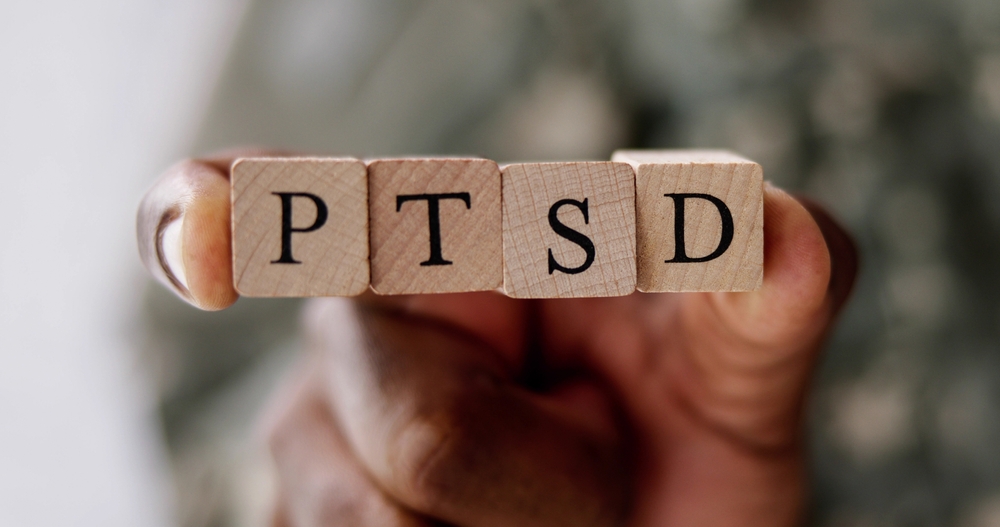Last Updated:
September 18th, 2025
Around 1 in 10 people will experience post-traumatic stress disorder (PTSD) in their lifetime, with over 6.5 million individuals in the UK likely to be affected. Among them, young women are particularly vulnerable, making up the largest group to screen positive for PTSD.
While trauma can impact anyone, the way PTSD presents in women is often distinct—shaped by biological, psychological, and social factors. Understanding these differences is vital. By recognising the unique challenges women face and offering trauma-informed care that speaks directly to their experiences, we can begin to build a path toward meaningful, lasting recovery.
How do we define and understand PTSD?
After a person experiences or witnesses a traumatic event, they may react to the event in many painful ways. The traumatic event could stem from a natural disaster, an act of violence, or a serious accident. Most people believe that they will recover from their symptoms and that their reactions will decrease in severity over time.
When the symptoms persist for an extended period, a professional may diagnose a person with post-traumatic stress disorder (PTSD). PTSD can become a dark force that disturbs a person’s daily functioning, their relationships and their capacity for work. There are many varying symptoms common in PTSD, but an overarching feeling of stress or being frightened is one of the most common, even when there is no sign of immediate danger.
The NHS states that PTSD is characterised by symptoms such as flashbacks, nightmares, intense anxiety and emotional numbness. It is often associated with war veterans or frontline workers, but PTSD can be developed by any person who experiences severe trauma.
We are thankful for the professionals who strive to understand PTSD better and to soothe its lingering, torturous effects. While we appreciate that both men and women can experience PTSD, there are some ways that the condition and symptoms may manifest differently between genders. We hope a greater understanding of these differences may improve our capacity to heal those who need it.
How PTSD symptoms commonly present in men vs women
Even if we momentarily disregard gender differences, PTSD will always manifest slightly differently for each person. A traumatic experience is, by its nature, highly specific to the person experiencing it. Understanding the multifaceted ways PTSD symptoms present can begin to highlight why such heightened care is needed in treating it.
We may then be able to broadly observe some of the different ways men and women experience PTSD symptoms. Firstly, research shows us that the lifetime prevalence of PTSD is around 10-12% in women, while only 5-6% in men. There are hypotheses on this statistic that the high female prevalence of PTSD may stem from increased vulnerability to trauma, abnormal immune responses, or dysregulations involved with fear processing. Among females, trauma has been associated with more severe psychiatric disorders compared to men.
Secondly, we should also consider how models of PTSD tend to focus on more observable, external expressions of trauma. This doesn’t always reflect how women respond to observations of traumatic experiences. We may be able to understand why symptoms appear differently if we compare the traditional studies of PTSD, followed by the way women’s symptoms can differ:
The classic PTSD model (often male-focused)
Much of our understanding of PTSD comes from studies on male combat veterans. PTSD was first formally recognised in 1980 when it was added to the DSM-III. The framework was heavily shaped by observations of combat veterans, dating back to “shell shock” in World War 1.
Because early PTSD research focused largely on men in military settings, the classic symptoms, such as flashbacks, nightmares and hypervigilance, were modelled around male experiences of war. As a result, this male-centric lens has historically overlooked or misunderstood how PTSD manifests differently in women, particularly in response to interpersonal trauma.
How women’s symptoms often differ
With later developments into how PTSD symptoms present for all people, it was found that PTSD manifested in women who experienced interpersonal trauma, such as domestic abuse, sexual assault, or childhood neglect. These forms of trauma often lead to mental health symptoms that aren’t recognised as PTSD.
Some of the symptoms women are more likely to experience include:
- Emotional numbing and dissociation, rather than overt aggression or hypervigilance.
- Internalising behaviours, such as guilt, shame and self-blame.
- Heightened anxiety and depression, which can overshadow the underlying trauma.
- Chronic physical symptoms, such as fatigue, headaches, or digestive issues, which can reflect the body’s somatic response to stress.
These symptoms may not always fit the traditional PTSD profile, but recognising the gendered expressions of trauma remains crucial to delivering more thoughtful and accurate care.
Why PTSD can be missed or misdiagnosed
Post-traumatic stress disorder can be difficult to diagnose in any person, but for women, it may be more likely to be misunderstood, minimised or attributed to unrelated health conditions. The reasons for these discrepancies may be both clinical and cultural.
Firstly, many of the symptoms more prevalent in women, such as anxiety, depression and emotional sensitivity, may be mistaken for mood disorders rather than trauma responses. A 2022 study published in BMC Psychiatry used a machine-learning approach to find people with likely undiagnosed PTSD. The study found that these individuals had higher rates of depression and anxiety diagnoses, suggesting potential misdiagnosis or underdiagnosis of PTSD. Understanding the rate of undiagnosed PTSD may also suggest that more women could be living with PTSD.
More broadly speaking, it may be the case that cultural and social expectations of women have led to underdiagnoses. In some ways, women are frequently socialised to be societal caretakers, emotionally available and resilient in the face of adversity. Expectations may mask the effects of trauma or make women feel guilty when symptoms arise.
Cultural narratives and painful “throw-away comments” may lead women to internalise blame or question the validity of their experiences. Brushing a woman’s feelings off with “She’s just being emotional/overreacting” can do serious harm to women who may need help recognising and unpacking genuine past trauma.
Is there a link between PTSD and addiction in women?
Generally speaking, yes, there is a significant connection between PTSD and drug addictions in both genders. Research highlights this high comorbidity rate between PTSD and substance abuse disorders (SUDs). Women with a substance use disorder seem more vulnerable to a dual diagnosis (30% to 59%), often linked to histories of childhood physical and/or sexual abuse. Rates for men are two to three times lower and are more closely linked to combat or crime trauma.
Recognising the interplay between PTSD and addiction is crucial for effective treatment, especially in women, where trauma-informed care can make a significant difference in recovery outcomes.
Healing PTSD with trauma-informed care
Treating PTSD in women may require us first to become aware of its differences and then apply them through trauma-informed care. There are many types of therapy used to help a person in addiction recovery, but trauma-informed care is the most focused on resolving complex traumatic experiences. For women, this type of treatment may benefit from accounting for gender-specific experiences, including relational trauma, abuse, and societal pressure.
Effective trauma-informed care typically includes:
- A heightened sense of safety: The environment where the therapy is delivered is designed to minimise re-traumatisation and to build therapist-client trust gradually. Physical and emotional safety should be at the forefront for trauma-informed therapy.
- Broader choice and collaboration: Trauma-informed therapists often take longer strides to make sure they’re working with women, rather than on them. Each client is given meaningful choices in their treatment and their autonomy should be reflected in tailored changes.
- Understanding gendered trauma: Practitioners are trained to recognise how women’s trauma may be rooted in power imbalances, family roles, or gender-based violence. These elements are not overlooked; they are central to the healing process.
- Therapies designed for trauma healing: Modalities like EMDR (Eye Movement Desensitisation and Reprocessing), somatic experiencing and DBT (Dialectical Behaviour Therapy) are often incorporated to process trauma safely and effectively.
- Focus on rebuilding identity and self-worth: Addiction and PTSD can strip a person of their sense of self. Trauma-informed care helps women reconnect with their values, strengths and future goals, restoring a sense of purpose beyond their trauma history.
Where can I find help for my addiction?
If you or someone you love is battling symptoms of PTSD, especially those tied to addiction, know that compassionate, trauma-informed support is available.
At UKAT, we understand how deeply trauma can affect the mind and body. Our tailored treatment programmes incorporate evidence-based therapy, trauma-sensitive care and addiction recovery tools to help you feel safe, seen and supported. Whether you’re navigating PTSD, substance use, or both, we’re here to guide you with empathy and expertise.
You don’t have to face trauma alone. Reach out to us today and take the first step toward healing, recovery, and a future no longer defined by your past.
(Click here to see works cited)
- Schein, Jeffrey. “PTSD STATS.” PTSD UK |, www.ptsduk.org/ptsd-stats
- “Coping with Traumatic Events.” National Institute of Mental Health, U.S. Department of Health and Human Services, www.nimh.nih.gov/health/topics/coping-with-traumatic-events
- NHS Choices, NHS, www.nhs.uk/mental-health/conditions/post-traumatic-stress-disorder-ptsd/overview
- Fonkoue IT, Michopoulos V, Park J. Sex differences in post-traumatic stress disorder risk: autonomic control and inflammation. Clin Auton Res. 2020 Oct;30(5):409-421. doi: 10.1007/s10286-020-00729-7. Epub 2020 Oct 6. PMID: 33021709; PMCID: PMC7598146.
- Rivera JC, Hylden CM, Johnson AE. Disability After Deployment Injury: Are Women and Men Service Members Different? Clin Orthop Relat Res. 2015 Aug;473(8):2448-54. doi: 10.1007/s11999-015-4180-6. PMID: 25666145; PMCID: PMC4488211.
- “Va.Gov: Veterans Affairs.” History of PTSD in Veterans: Civil War to DSM-5, 17 Aug. 2018, www.ptsd.va.gov/understand/what/history_ptsd.asp.
- Gagnon-Sanschagrin, Patrick, et al. “Identifying Individuals with Undiagnosed Post-Traumatic Stress Disorder in a Large United States Civilian Population – A Machine Learning Approach – BMC Psychiatry.” BioMed Central, BioMed Central, 29 Sept. 2022, bmcpsychiatry.biomedcentral.com/articles/10.1186/s12888-022-04267-6.
- Wiley Online Library | Scientific Research Articles, Journals, …, onlinelibrary.wiley.com/doi/abs/10.1111/j.1521-0391.1997.tb00408.x.





